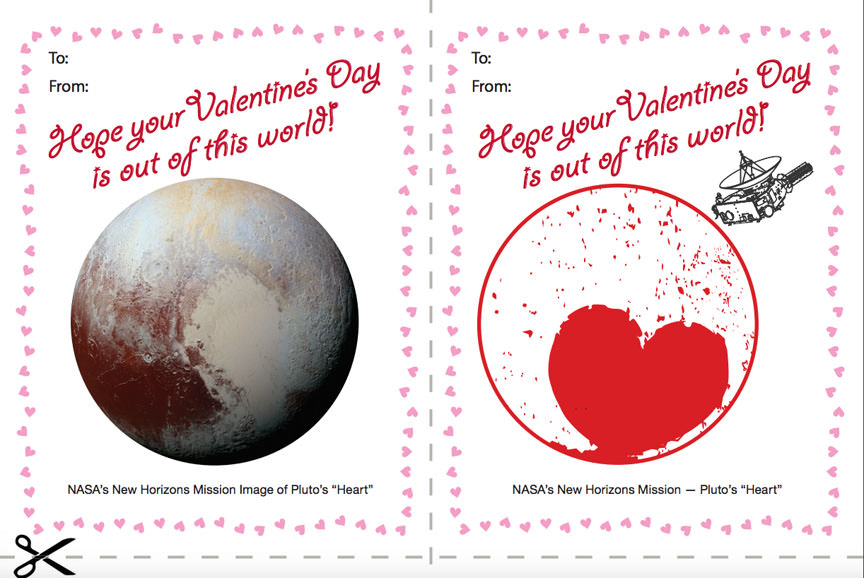
Still looking for the right card for your sweetheart this Valentine’s Day? Why not do it in cosmic proportion by getting NASA on your side? The tender-hearted folks at agency may have just what you’re looking for.
The staff at the New Horizons mission headquarters offers two valentines this season that play off Pluto’s heart-shaped, icy plain Tombaugh Regio. While the temperature there hovers around 400 below, you’re guaranteed a 98.6° smile when your sweetie opens the card and sees your love reflected in glittering nitrogen ice.
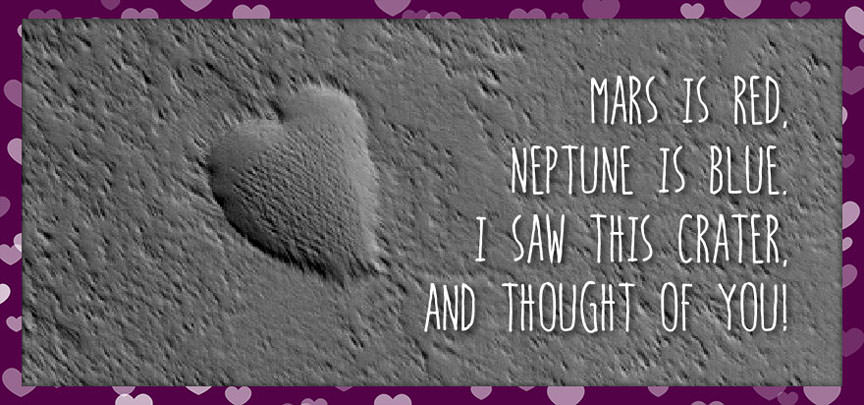
Pluto not your thing? Select from 12 different Mars e-card love greetings at this NASA site and blow your partner away in a Martian dust devil of love. Many of the heart-shaped features depicted on the cards are genuine features and include collapse pits, craters and mesas.
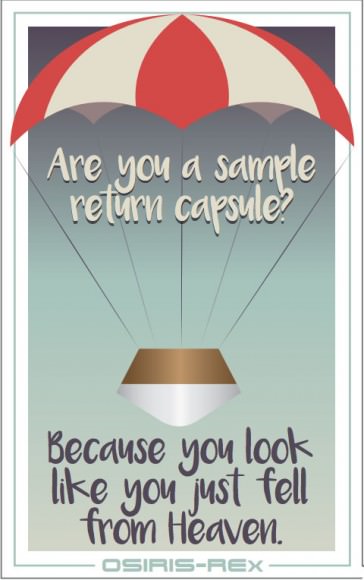
Even the asteroids send their saucy wishes. Check out the delightful series of valentines from the upcoming OSIRIS-Rex sample return mission to 101955 Bennu, slated to launch in September this year and return a sample of the carbonaceous asteroid to Earth in 2023. If you go this route, I’d complement the card with a meal heavy on edible carbonaceous material at your partner’s favorite restaurant.
Happy Valentine’s Day! Spread the love for a happier planet.

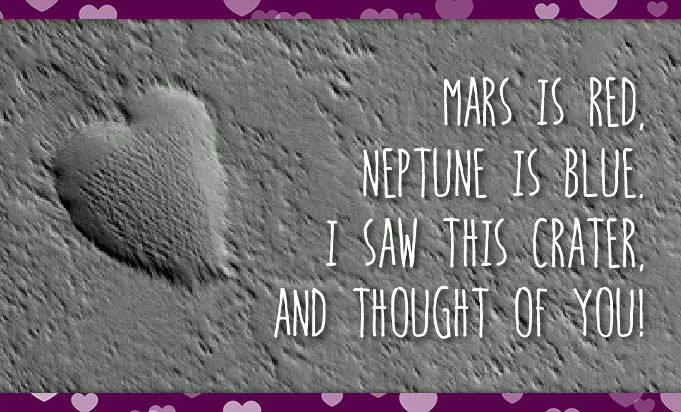
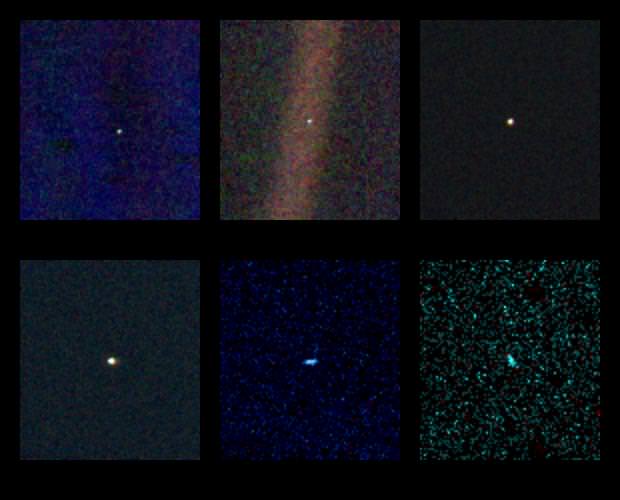

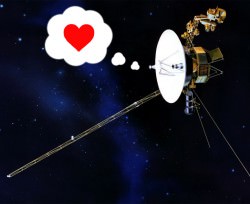 It was the unique perspective above provided by Voyager 1 that inspired Carl Sagan to first coin the phrase
It was the unique perspective above provided by Voyager 1 that inspired Carl Sagan to first coin the phrase